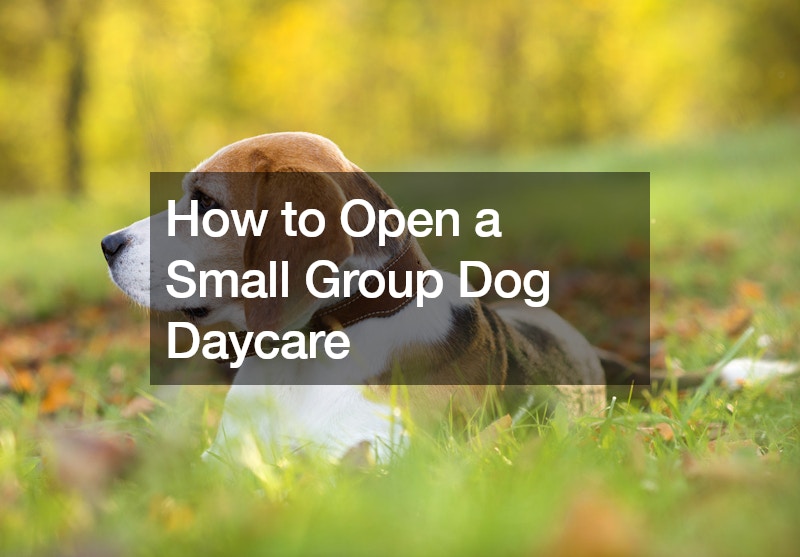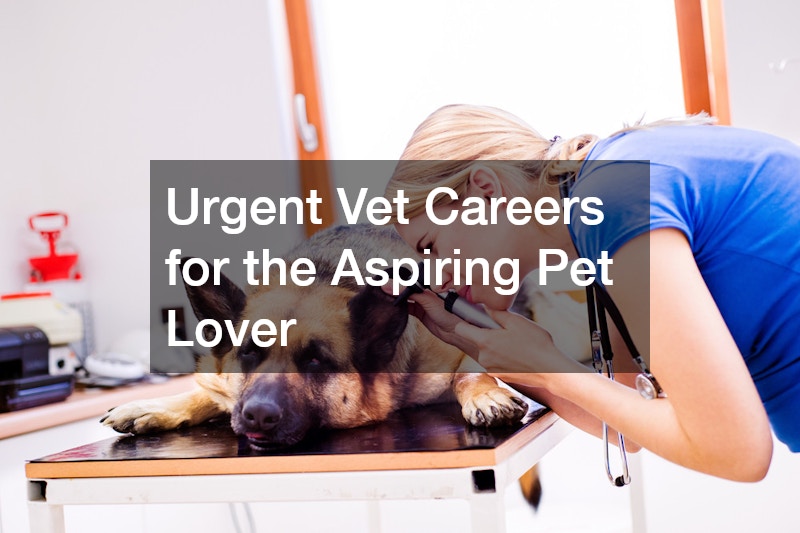How to Open a Small Group Dog Daycare
Introduction
Opening a small group dog daycare can be a rewarding venture for animal lovers looking to turn their passion into a business. Providing a safe and fun environment for dogs to socialize and play can attract loyal customers and build a strong reputation in the community. This comprehensive guide will take you through the essential steps to start and grow your own small group dog daycare.
Section 1: Licensing and Regulations

Researching local licensing requirements
Before opening your small group dog daycare, it’s crucial to research and obtain the necessary licenses and permits required by your local government. These licenses typically include animal welfare regulations, health and safety standards, and zoning laws specific to pet care businesses.
Understanding zoning regulations
Zoning regulations can dictate where you can operate your small group dog daycare, so it’s essential to understand these laws before selecting a location. Be sure to check if your chosen space is zoned for commercial use and complies with any restrictions related to noise or waste management.
Obtaining necessary permits
In addition to licensing, you may need specific permits to operate a small group dog daycare. This can include permits for building renovations, signage, waste disposal, and more. Contact your local government office to determine the exact permits required for your business.
Securing business insurance
To protect your small group dog daycare from potential risks and liabilities, it’s essential to invest in business insurance. Policies such as liability insurance, property insurance, and workers’ compensation can provide coverage in case of accidents, injuries, or property damage.
Section 2: Business Planning
Developing a business plan
A well-crafted business plan is essential for the success of your small group dog daycare. Your plan should outline your services, target market, pricing strategies, marketing tactics, and financial projections. This roadmap will guide your decision-making and help secure funding from investors or lenders.
Creating a budget
Establishing a realistic budget is crucial for managing the finances of your small group dog daycare. Consider all expenses, including rent, utilities, payroll, supplies, and marketing, to determine your break-even point and potential profitability. Regularly review and adjust your budget to stay on track financially.
Setting prices for services
When setting prices for your small group dog daycare services, consider factors such as your operating costs, competition, and perceived value by customers. Offering competitive rates while providing high-quality care can help attract and retain clients. Consider offering different packages or add-on services to cater to various needs.
Section 3: Location and Facilities

Finding a suitable location
Choosing the right location for your small group dog daycare is crucial for attracting customers and ensuring the safety and well-being of the dogs in your care. Look for a space with ample indoor and outdoor areas for dogs to play, relax, and socialize. Consider accessibility for clients and proximity to residential areas.
Designing a dog-friendly space
When designing the layout of your small group dog daycare, prioritize the comfort and safety of the dogs. Create separate areas for different sizes or temperaments of dogs, provide cozy resting spots, and secure outdoor play areas with fencing. Incorporate dog-friendly features such as non-toxic flooring and calming music.
Ensuring safety and security
Safety should be a top priority in your small group dog daycare to prevent accidents and injuries. Implement safety measures such as secure fencing, emergency exits, and trained staff to supervise dog interactions. Regularly inspect the facility for potential hazards and maintain a clean and hygienic environment for the dogs.
Repairing or replacing your roof
To ensure the safety and integrity of your small group dog daycare facility, consider hiring roof replacement services to inspect and repair any damages or leaks. A sturdy and well-maintained roof can protect your building from water damage and provide a comfortable environment for dogs and employees.
Repairing your plumbing
Maintaining a functional plumbing system is essential for the smooth operation of your small group dog daycare. If you encounter any plumbing issues such as leaks, clogs, or low water pressure, consider hiring a local plumbing contractor to conduct repairs or upgrades to prevent disruptions to your business.
Upgrading your bathrooms
Providing clean and well-equipped bathrooms for staff and clients is essential for the hygiene and comfort of your small group dog daycare. Consider upgrading fixtures, lighting, and ventilation in your bathrooms with the help of a plumbing repair service to create a pleasant experience for everyone who visits your facility.
Adding a deck to your outdoor space
Expanding your outdoor space with a deck can provide a versatile area for dogs to play and relax in your small group dog daycare. Consider hiring a professional deck builder to design and construct a safe and durable deck that complements your facility’s layout and enhances the overall experience for dogs and clients.
Upgrading your HVAC system
Maintaining a comfortable temperature in your small group dog daycare is essential for the well-being of the dogs and staff. Consider hiring commercial HVAC companies to inspect and upgrade your heating, ventilation, and air conditioning system to ensure efficient operation and proper airflow throughout your facility.
Inspecting your electrical wiring
Regularly inspecting your electrical wiring is crucial to prevent fire hazards and electrical malfunctions in your small group dog daycare. Consider hiring local electricians to conduct a thorough inspection of your wiring, outlets, and fixtures. Address any issues promptly to maintain a safe and reliable electrical system.
Getting rid of water damage
Water damage can pose health risks and structural issues in your small group dog daycare facility. If you discover water damage from leaks, flooding, or moisture buildup, contact water damage repair specialists to assess the extent of the damage and perform necessary repairs to restore the integrity of your building.
Installing a new door
Securing your small group dog daycare with sturdy and functional doors is essential for the safety and security of the dogs and staff. Consider installing a new overhead door or exterior door with secure locks and proper insulation to prevent unauthorized access and maintain a welcoming environment for clients.
Section 4: Staffing and Training
Hiring qualified staff
Building a team of qualified and passionate staff is crucial for the success of your small group dog daycare. Look for candidates with experience in animal care, behavior training, and customer service. Conduct thorough interviews and background checks to ensure the well-being of the dogs in your care.
Training employees in pet care
Providing comprehensive training to your staff in pet care and handling is essential for maintaining a safe and enjoyable environment for dogs in your small group dog daycare. Train employees in dog behavior, first aid, emergency protocols, and customer communication to address any situation with professionalism and care.
Implementing safety protocols
Establishing clear safety protocols and procedures is essential for preventing accidents and ensuring the well-being of dogs, staff, and clients in your small group dog daycare. Develop guidelines for dog interactions, emergency situations, and health protocols. Regularly review and update safety measures to maintain a secure environment.
Section 5: Marketing and Promotion

Creating a business name and logo
Building a strong brand identity is essential for attracting customers to your small group dog daycare. Create a memorable business name and design a unique logo that reflects your values and services. Use consistent branding across your marketing materials, website, and social media to establish a cohesive brand presence.
Building a website and social media presence
Having a professional website and active social media accounts is crucial for promoting your small group dog daycare and attracting clients. Create a user-friendly website with information about your services, pricing, and contact details. Engage with pet owners on social media platforms to showcase your facility and connect with potential customers.
Networking with local pet businesses
Building relationships with local pet businesses such as veterinarians, groomers, and pet stores can help generate referrals and collaborations for your small group dog daycare. Attend networking events, join pet-related associations, and offer mutual promotions to establish partnerships within the community.
Investing in fleet vehicles for advertising
Using fleet vehicles for advertising can increase visibility and reach for your small group dog daycare. Consider branding your vehicles with your business name, logo, and contact information to promote your services while on the road. Invest in vehicle wraps or magnet signs for a cost-effective and impactful advertising strategy and keep them running smoothly with auto repair services.
Section 6: Services Offered
Designing daycare packages
Offering a variety of daycare packages can attract different types of clients to your small group dog daycare. Consider options such as half-day or full-day care, weekly passes, grooming packages, and training sessions. Tailor your services to meet the needs and preferences of pet owners while providing a valuable and convenient experience for their dogs.
Offering grooming and training services
Providing grooming and training services can enhance the overall experience for clients and their dogs at your small group dog daycare. Offer services such as baths, haircuts, nail trims, and behavior training to cater to the grooming and training needs of customers. Hire qualified professionals or partner with local experts to deliver high-quality services.
Providing special accommodations for dogs with specific needs
Offering special accommodations for dogs with specific needs, such as senior dogs, puppies, or dogs with medical conditions, can set your small group dog daycare apart from competitors. Provide personalized care, individualized playtime, and additional comfort options to ensure the well-being and happiness of all dogs in your care.
Section 7: Health and Safety Standards

Maintaining cleanliness and hygiene
Regular cleaning and disinfection of your small group dog daycare facility is essential for preventing the spread of diseases and maintaining a healthy environment for dogs. Implement a cleaning schedule for all areas of the facility, including play areas, restrooms, and food preparation areas. Use pet-safe cleaning products to ensure the safety of dogs and staff.
Monitoring dog behavior and interactions
Monitoring dog behavior and interactions is crucial for preventing aggression, conflicts, and injuries in your small group dog daycare. Train staff to recognize signs of stress, fear, or aggression in dogs and intervene promptly to prevent escalating situations. Encourage positive play and socialization while respecting each dog’s individual needs and boundaries.
Implementing vaccination requirements
Requiring up-to-date vaccinations for all dogs entering your small group dog daycare is essential for preventing the spread of contagious diseases. Request vaccination records from pet owners and verify that dogs are vaccinated against common illnesses such as rabies, distemper, and parvovirus. Enforce strict vaccination policies to protect the health and well-being of all dogs in your care.
Section 8: Customer Relations
Creating a welcoming environment for clients
Providing exceptional customer service and creating a welcoming environment for clients can foster loyalty and positive relationships with pet owners. Greet clients with a friendly attitude, communicate openly and transparently about your services, and address any concerns or questions promptly. Personalize the experience for clients and their dogs to exceed their expectations.
Communicating effectively with pet owners
Clear and open communication with pet owners is essential for building trust and understanding their needs and preferences for their dogs in your small group dog daycare. Keep clients informed about their dog’s activities, behaviors, and well-being while in your care. Listen to feedback, address any concerns, and update clients regularly on their dog’s progress.
Soliciting feedback and reviews
Encouraging feedback and reviews from clients can help you improve your services and reputation in the community. Request feedback through surveys, comment cards, or online review platforms. Respond to reviews promptly, whether positive or negative, and use feedback to make adjustments and enhancements to your small group dog daycare.
Section 9: Growth and Expansion
Adding new services to attract more clients
Continuously innovating and adding new services to your small group dog daycare can attract more clients and retain existing ones. Consider introducing new daycare packages, training classes, grooming services, or special events to appeal to a wider audience of pet owners. Stay ahead of industry trends and client preferences to remain competitive.
Expanding to multiple locations
Expanding your small group dog daycare to multiple locations can increase your market reach and revenue potential. Evaluate market demand, competition, and demographic trends in different areas to identify suitable locations for expansion. Plan carefully, establish consistent branding and service standards across locations, and invest in effective marketing strategies to promote each site.
Participating in community events and fundraisers
Engaging with the local community through events and fundraisers can raise awareness of your small group dog daycare and support charitable causes. Sponsor or participate in pet-related events, adoption drives, or fundraisers for animal welfare organizations. Build relationships with local businesses and organizations to establish your presence and contribute to the community.
Section 10: Challenges and Solutions
Dealing with aggressive dogs
Managing aggressive behavior in dogs can be challenging in a small group dog daycare setting. Implement strict behavior assessment protocols, provide training for staff in handling aggressive dogs, and separate dogs with aggressive tendencies from the group. Consult with animal behavior experts or trainers for guidance on managing and addressing aggression in dogs.
Handling emergency situations
Preparing for and responding to emergency situations is crucial for the safety and well-being of dogs in your small group dog daycare. Develop and practice emergency protocols for incidents such as injuries, illnesses, escapes, or natural disasters. Maintain a stocked first aid kit, establish communication channels with local veterinary clinics, and educate staff on emergency procedures.
Managing staff turnover
Staff turnover can disrupt operations and impact the quality of care in your small group dog daycare. Implement strategies to attract and retain qualified employees, such as offering competitive wages, benefits, and training opportunities. Foster a positive work environment, provide clear expectations and feedback, and recognize and reward staff for their contributions to build a strong and dedicated team.
Conclusion
In conclusion, opening and running a successful small group dog daycare requires careful planning, commitment to high-quality care, and strong customer relationships. By following the steps outlined in this guide, you can establish a thriving business that provides a safe and enjoyable environment for dogs and their owners. Embrace challenges as opportunities for growth, stay informed about industry trends, and continuously seek ways to improve and expand your services. With dedication and passion for canine companionship, your small group dog daycare can become a beloved community resource and a rewarding venture for years to come.




